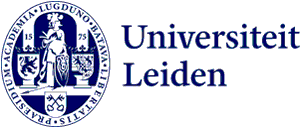
Digital guest lectures for secondary school students: 'The interdisciplinary collaboration gives me energy'
Can a robot perform a religious ritual just like a monk? And what exactly is a religious ritual? Robots and religion seem to be two different subjects, but according to university lecturer Elpine de Boer, both can make us think about what it means to be human and what we consider to be of value. Together with her colleague Peter van der Putten, she developed a digital guest lecture on this subject for secondary school students.
‘I was hesitant when I was approached by ICLON, but I decided to talk to the other lecturer who was paired with me. Personally, it always gives me a lot of energy to work on subjects that seem to vary widely and to then arrive at a common theme,’ explains De Boer. ‘My area of expertise is psychology of religion. I speak of religiosity instead of religion to emphasise that it is about how people experience things and that religion is a dynamic phenomenon: strongly determined by the context in which it takes place and variable. Peter van der Putten's field is something completely different: artificial intelligence.’
Making the abstract understandable
Despite the differences, a number of common questions arose during the orientation meetings. What does a robot say about being human and our relationship to matter, for example? And what does the perception of robots say about the culture and religion in which we grew up? ‘These are very abstract questions, but ones that we think are very important. The goal was not to transfer knowledge to students, but rather to get them to reflect.’
‘Both religiosity and the relationship to matter - such as a robot - are not fixed. People have different opinions about these things and look at them differently in different cultures. The subjects lend themselves for reflection and discussion,’ says de Boer.
But to do this, it first had to be made comprehensible for secondary school students. ‘At a certain point, we had completely found each other in our abstract philosophical questions and then we thought: now we have to write the script. That was quite difficult,’ says de Boer. So they chose three concrete examples from a website that Peter van der Putten and a colleague had previously developed to derive their questions from. ‘A 16th century monk performing a religious ritual and a robot copy of a deceased loved one, for example.’
The future of robots
The experience did not only result in the digital guest lecture Robots & Religie (Robots & Religion, ed.). De Boer built on the newly acquired knowledge in one of her regular seminars. ‘As a result of our cooperation, I have discussed and debated articles on robotisation and religiosity with my third-year students. Peter van der Putten has also incorporated certain elements into his teaching.’
‘The prediction is that robots will play an even bigger role in the future. That is why I think it is important to follow these technological developments from different disciplines with an open attitude and to ask ourselves what is of value to us,’ explains De Boer.
A moment of reflection
De Boer looks back on the collaboration with pleasure - especially the creative initial phase - but emphasises that time can be an obstacle. ‘It is a pity that there is not enough time for extracurricular activities, because they are great opportunities. It gives me energy to work with people from other disciplines and faculties. It is a good moment to reflect on your own subject. I think it really benefits you as a lecturer.’
